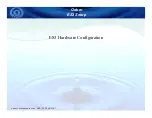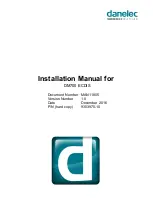
General Introduction
10
Operator’s Manual
SatSeconds Icon
—The SatSeconds feature provides alarm management for mild or
brief SpO
2
limit violations. When the SatSeconds feature is enabled, the SatSeconds
circle icon fills in the clockwise direction as the SatSeconds alarm management
system detects SpO
2
readings outside of the limit setting. The SatSeconds icon
empties in counterclockwise direction when SpO
2
readings are within limits. When
the SatSeconds icon reaches full, a medium priority alarm sounds. Visible in all
display views. For more information about using the feature, reference
SatSeconds™ Alarm Management Feature
Fast Response Mode Icon
—Appears at bottom right of the menu bar when
enabled. The oximeter algorithm responds to changes in the SpO
2
data at differing
rates: two to four seconds in Fast Mode and five to seven seconds in Normal Mode
when calculating %SpO
2
. The response mode setting does not affect the algorithm’s
calculation of pulse rate, nor does it influence the recording of trend data, which
occurs at one-second intervals. The response mode, however, may impact the SPD
alarm behavior. Visible in all display views when enabled. For more information
about using the feature, reference
Neonate Alarm Limits Icon
—Appears at the bottom far right of the menu bar when
enabled. Visible when the alarm limits are set to neonate limit values, but not when
set to adult limit values. For more information about using the feature, reference
Monitoring Values
WARNING
Failure to cover the OxiMax pulse oximetry sensor site with opaque material in high
ambient light conditions may result in inaccurate measurements.
The OxiMax N-600x pulse oximeter continuously assesses the quality of the pulse
oximetry signal while monitoring patient SpO
2
and pulse rate. Oximeter front panel
values reflect the data derived from monitoring.
The N-600x pulse oximeter algorithm automatically extends the amount of data
required for measuring SpO
2
and pulse rate depending on the measurement
conditions.
•
Normal conditions
—During normal measurement conditions the averaging time is six
to seven seconds (approximately three seconds in Fast Mode).
•
Brief abnormal conditions
—During conditions such as those caused by low perfusion,
interference (e.g., external interference such as ambient light or patient movement), or a
combination of these, the oximeter automatically extends the amount of data required
beyond seven seconds. If the resulting dynamic averaging time exceeds 20 seconds, the
pulse search indicator is lit solid and %SpO
2
and Pulse Rates update every second.
•
More severe conditions
—As these conditions extend, the required amount of data
continues to increase. If the dynamic averaging time reaches 40 seconds, the pulse search
indicator flashes to denote a loss-of-pulse condition and %SpO
2
and pulse rate flash
values of zero. This activates the audible alarm state.
Summary of Contents for Nellcor OxiMax N-600x
Page 1: ...Operator s Manual Nellcor N 600x Pulse Oximeter Alarm Management System OximaxTM Technology TM...
Page 10: ...Safety Information 4 Operator s Manual Page Left Intentionally Blank...
Page 21: ...Oximeter Features Operator s Manual 15 Figure 6 Second SpO2 Event No SatSeconds Alarm...
Page 26: ...General Introduction 20 Operator s Manual Page Left Intentionally Blank...
Page 126: ...Theory of Operations 120 Operator s Manual Page Left Intentionally Blank...
Page 145: ......
















































